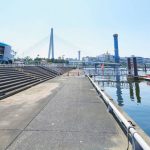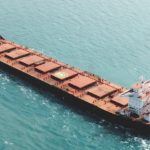The SS City of Cairo was a British passenger ship. It was manufactured in 1915 for Ellerman Lines Ltd of London by Earle’s Shipbuilding & Engineering Co. Ltd, Hull. It was 450 feet (140 m) long, had two decks, two masts, and weighed 8,034 tonnes. Liverpool served as the home port. She was ordered to transport supplies to the United Kingdom. The final voyage was from Mumbai to the UK via Durban, Cape Town, and Pernambuco, Brazil, under the order of Master, William A. Rogerson.
On November 1, 1942, the SS City of Cairo left Cape Town with 101 passengers, including 28 women and 19 children. Soldiers from the Army and Royal Navy were present among the ten D.E.M.S. To complete the team, two additional Lascar crews were engaged in India to serve on British ships. She was carrying a general cargo of 7,422 tonnes, which includes 2,000 boxes of silver coins, pig iron, timber, wool, and cotton. A torpedo hit the SS City of Cairo. Two crew members and four passengers died during the flight. Later the master gave the order to leave the ship, and all the women and children successfully departed the ship. The ship sank at the stern around 480 miles (770 km) south of St Helena. Twenty minutes after the first torpedo was fired, Merten fired a second one, and a few minutes later, the ship sank.
The other two crews that died in the shipwreck were the Chief Radio Officer and the Harry Peever. He had remained in the wireless room to send distress signals. In order to ensure help, he had stayed in the Wi-Fi room The SS City of Cairo went down. Enquired about the ship’s identity, its cargo, and if it was transporting prisoners of war. He then provided a direction for the nearest land, but by this point, the Brazilian coast was 1,600 miles (2,200 km) away, Africa 1,600 miles (2,100 km), or St. Helena, 500 miles (800 km) away (800 km). The survivors said three further boats were at sea, but they were unsure about their locations. After several searches, the SS Clan Alpine brought the survivors to St. Helena and they were taken to the hospital.
On November 19, evening, the SS Bendoran came to save the other boat carrying 47 survivors and transported them to Cape Town. Before being rescued, these four boats had been at sea for 13 days. Out of those saved, one man eventually passed away onboard the SS Bendoran, two onboard the Clan Alpine, and four more passed away in a St. Helena hospital.
By November 23, when a boat with 17 people on board had never observed St Helena, they assumed they must have overshot the island. Many of the inhabitants were already deceased, so instead of attempting to explore the area of the island, the survivors chose to go 1,500 miles (2,400 km) to the west, to the coast of South America. On December 27, two people survived the 51-day trip when their boat was located and rescued by Brazilian Navy minelayer Caravelas, including the third officer of the City of Cairo and a female passenger.
On December 12, the German blockade runner and merchant Rhakotis, which was sailing from Japan to Bordeaux, picked up three further survivors. They had sailed for 36 days. Then, a survivor passed away onboard the Rhakotis. On January 1, the warship HMS Scylla spotted the merchant ship Rhakotis and attacked and destroyed it off Cape Finisterre. The two SS City of Cairo survivors who were still alive made it into two different lifeboats and avoided drowning a second time. One was picked up by U-410 the following day, and it arrived at Saint-Nazaire three days later. The submarine was on its way to its destination when British aircraft spotted her and struck.
A total of 311 individuals were on board the City of Cairo; 104 of the 79 crew members, three gunners, and 22 passengers died. However, 207 people made it through the ordeal. Ninety people died on the boats; six during the sinking, and seven died after being rescued. On the Tower Hill Memorial, some of the names of the deceased are written.
The ship was split into two and buried far beneath the surface of the water. The ship had meters’ worth of dirt piled on it in some places, which helps to explain why it lacks height and reflectivity. Many objects were spotted on and around the wreck, including the terminal part of the second missile, where the counter-rotating engines were plainly visible. This was the only thing found at the scene, save the silver cargo.
The SS City of Cairo was located by MAX Ik. The usual conflicts between the submarines and the ship’s officer’s locations were discovered during the archives inquiry. With caution, we dived into a little target that was hidden among the hillside since it didn’t fit our notions of what a crash should look like. The target was low in height and reflectivity. In contrast, DOS’s rules mandate that any targets that don’t seem to be natural be evaluated often and inspected. It turned out to be a wreck, and the identity of the SS City of Cairo was eventually established.
To be continued…






